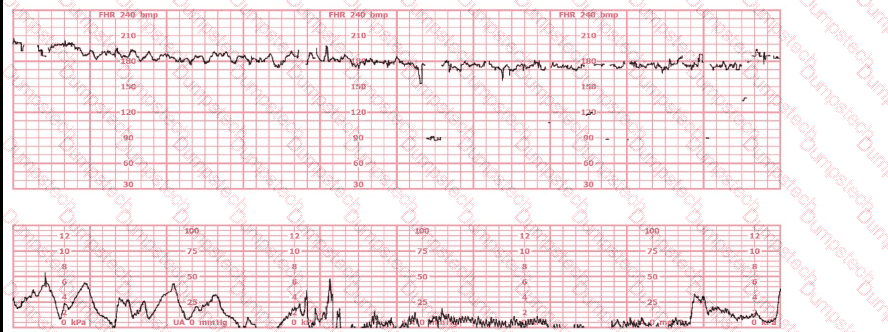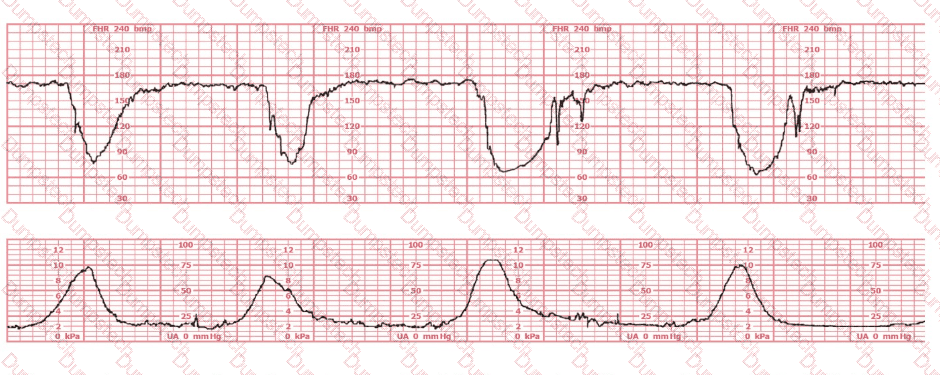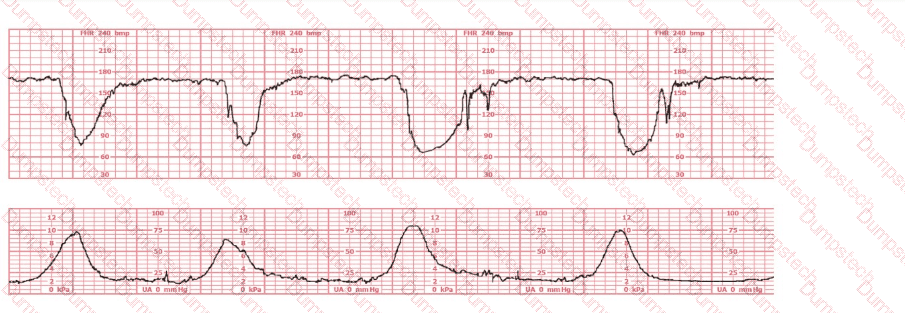Big Black FridaySale Limited Time 70% Discount Offer - Ends in 0d 00h 00m 00s - Coupon code = simple70
Pass the NCC C-EFM EFM Questions and answers with Dumpstech
A 30-year-old woman (G2P0) is experiencing preterm labor at 26-weeks gestation. She is receiving magnesium sulfate for neuroprotection. Her external fetal monitoring tracing over the past 30 minutes is shown. The next step would be to:

The main reason intrauterine pressure catheters are placed is to:
Patient safety is enhanced when alarms:
Sustained fetal supraventricular tachycardia that goes untreated is most likely to result in:
After spontaneous rupture of membranes, this fetal heart rate pattern is observed. The initial intervention should be to:

The success of interventions to treat fetal hypoxia first depends on:
Based on the fetal heart rate tracing shown, the expected fetal pH would be:

(Full question)
Vibroacoustic stimulation (VAS) is a useful intervention which can
A woman in labor has been pushing for 4 hours. For the last 2 hours, there have been recurrent variable decelerations. Variability has evolved from moderate to minimal. Cervical exam is 10/100%/+2, fetal head OP. There has been no fetal descent for the last 45 minutes. Based on the tracing shown, the most reasonable approach is

A woman has been 5 cm dilated for the past 3 hours. The tracing shown has developed over the last 30 minutes. The best initial course of action is to:

